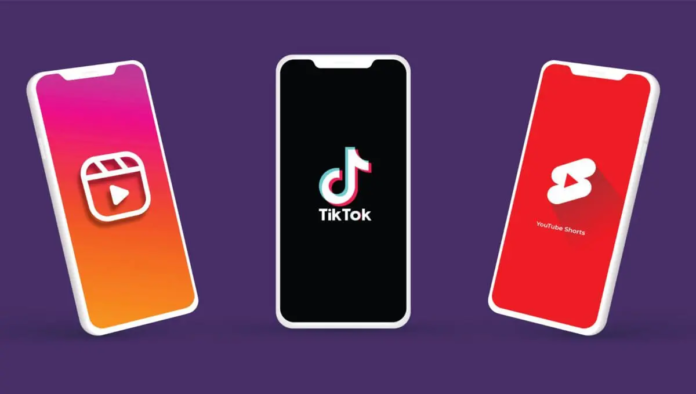The rise of short-form video content has been nothing short of meteoric. With millions of users consuming bite-sized videos daily, platforms like TikTok and YouTube Shorts have become key players in this digital revolution. These platforms offer unique features and opportunities for content creators, sparking debates about which is the superior choice. This blog post aims to compare TikTok and YouTube Shorts to help determine which platform might be the best fit for your short-form video content needs.
Overview of Short-Form Video Platforms
Short-form video refers to content that typically lasts between 15 seconds to one minute, designed to capture the viewer’s attention quickly. The growing popularity of this format is driven by its ability to deliver quick entertainment and information in our fast-paced digital age. TikTok, launched in 2016, and YouTube Shorts, introduced in 2020, are at the forefront of this trend, each offering distinct advantages for creators and viewers alike.
TikTok has quickly become synonymous with short-form video, offering an extensive array of tools and features that make content creation easy and fun. YouTube Shorts, leveraging the massive user base of its parent platform, provides an integrated experience for those familiar with YouTube. Both platforms have seen exponential growth, but they cater to slightly different audiences and offer varied functionalities.
Audience Demographics
TikTok primarily attracts a younger audience, with a significant portion of its users being teenagers and individuals in their early twenties. This demographic is known for its high engagement rates, often participating in viral challenges and trends. For creators targeting this age group, TikTok offers an unparalleled opportunity to connect with a highly active and interactive audience.
TikTok primarily attracts a younger audience, with a significant portion of its users being teenagers and individuals in their early twenties. This demographic is known for its high engagement rates, often participating in viral challenges and trends. For creators targeting this age group, TikTok offers an unparalleled opportunity to connect with a highly active and interactive audience. Inigo Rivero, Marketing Director of House Of Marketers, notes that 60% of TikTok’s users are under 30, whereas YouTube Shorts appeals to a wider age range, including older viewers. This broader audience range means that content on YouTube Shorts can reach a more varied demographic, from young viewers to older adults. This diversity influences the type of content that performs well on each platform, with TikTok favoring trendy and fast-paced videos, while YouTube Shorts accommodates a wider range of content types.
On the other hand, YouTube Shorts taps into YouTube’s extensive and diverse user base, which spans across various age groups and interests. This broader audience range means that content on YouTube Shorts can reach a more varied demographic, from young viewers to older adults. This diversity influences the type of content that performs well on each platform, with TikTok favoring trendy and fast-paced videos, while YouTube Shorts accommodates a wider range of content types.
Platform Features and Tools
TikTok is renowned for its advanced editing tools and AR effects, which allow creators to produce polished and engaging videos with ease. Features such as duets, stitches, and a vast library of music and sound effects enable creators to participate in trends and challenges that drive virality. These tools not only enhance the content creation process but also help maintain a dynamic and interactive user experience.
YouTube Shorts offers a more streamlined approach to video creation, focusing on ease of use and integration with YouTube’s existing platform. While its editing tools are less sophisticated compared to TikTok, the seamless integration with YouTube allows creators to leverage their existing subscriber base and analytics. This integration can be particularly beneficial for creators who already have a presence on YouTube and want to experiment with short-form content without starting from scratch.
TikTok is renowned for its advanced editing tools and AR effects, which allow creators to produce polished and engaging videos with ease. Features such as duets, stitches, and a vast library of music and sound effects enable creators to participate in trends and challenges that drive virality. These tools not only enhance the content creation process but also help maintain a dynamic and interactive user experience. Aymen Zaidi, Marketing Manager & Content Producer at ClickTechnica, points out that TikTok offers creative tools like filters, effects, and soundtracks, and integrates seamlessly with Instagram and Twitter for cross-promotion. YouTube Shorts, though featuring basic editing tools, benefits from its integration with the larger YouTube ecosystem, Google Ads, and other marketing tools, providing a comprehensive approach to content creation and promotion. This integration can be particularly beneficial for creators who already have a presence on YouTube and want to experiment with short-form content without starting from scratch.
Content Creation and Trends
On TikTok, content that often performs well includes comedic sketches, dance routines, challenges, and quick tutorials. The platform’s algorithm favors content that is engaging and has the potential to go viral, making it a hotspot for trends that spread rapidly across the internet. Emerging trends on TikTok often revolve around music and popular culture, with users frequently creating their own spins on viral content.
YouTube Shorts, however, sees a different mix of popular content. Educational tutorials, influencer marketing videos, and brand awareness campaigns tend to perform well. Given YouTube’s reputation as a go-to source for learning and information, Shorts content often leans towards informative and utility-based videos. Emerging trends on YouTube Shorts often include how-to guides, product reviews, and creative short films.
Monetization Options
TikTok offers several monetization options for creators, including the Creator Fund, brand partnerships, and influencer marketing. The Creator Fund allows eligible users to earn money based on their video views and engagement. Additionally, TikTok’s robust ecosystem of brand partnerships enables creators to collaborate with companies for sponsored content, providing another revenue stream.
YouTube Shorts, while relatively new, leverages YouTube’s established monetization infrastructure. Creators can earn through ad revenue sharing, brand partnerships, and the YouTube Partner Program. The integration with YouTube’s broader monetization features means that creators can potentially earn more through multiple revenue streams, including ads that run on their longer-form content.
TikTok offers several monetization options for creators, including the Creator Fund, brand partnerships, and influencer marketing. The Creator Fund allows eligible users to earn money based on their video views and engagement. Additionally, TikTok’s robust ecosystem of brand partnerships enables creators to collaborate with companies for sponsored content, providing another revenue stream. Andrei, Co-Founder & CEO of DontPayFull, highlights that TikTok’s monetization options are more limited, focusing mainly on brand deals and a new revenue-sharing program. In contrast, YouTube Shorts provides more established ways to earn money, such as ad revenue sharing and the Creator Fund. The integration with YouTube’s broader monetization features means that creators can potentially earn more through multiple revenue streams, including ads that run on their longer-form content.
Engagement and Virality
TikTok is known for its high engagement rates, driven by an algorithm that prioritizes viral content. The platform’s “For You” page is designed to surface trending videos, encouraging users to discover and interact with new content constantly. This focus on virality means that even new creators have the chance to achieve widespread recognition if their content resonates with viewers.
YouTube Shorts benefits from YouTube’s extensive user base, providing a large potential audience for short-form content. While the platform’s algorithm is still evolving, Shorts can gain significant traction, especially when tied to existing popular channels. User-generated content plays a crucial role in both platforms, driving engagement and encouraging a steady stream of fresh, relatable content.
Strengths and Weaknesses
TikTok’s strengths lie in its strong community, advanced editing tools, and high potential for virality. However, it faces challenges such as privacy concerns and a predominantly younger audience, which may limit its appeal to some creators. Despite these issues, TikTok remains a powerful platform for those looking to create trendy and engaging short-form videos.
YouTube Shorts’ main strengths include its integration with YouTube, access to a broader audience, and established monetization options. Its weaknesses, however, include less advanced editing tools and a slower potential for viral growth compared to TikTok. Nonetheless, for creators already established on YouTube, Shorts offers an excellent opportunity to diversify their content and reach.
Conclusion
In conclusion, both TikTok and YouTube Shorts offer unique advantages for short-form video creators. TikTok excels with its robust editing tools and high engagement rates, making it ideal for creators targeting a younger, trend-focused audience. YouTube Shorts, on the other hand, provides a more integrated experience with access to a diverse audience and established monetization options, suiting creators looking to build on their existing YouTube presence. Ultimately, the best platform depends on your content goals and target audience. Experimenting with both can help you determine which aligns best with your creative and marketing strategies.











